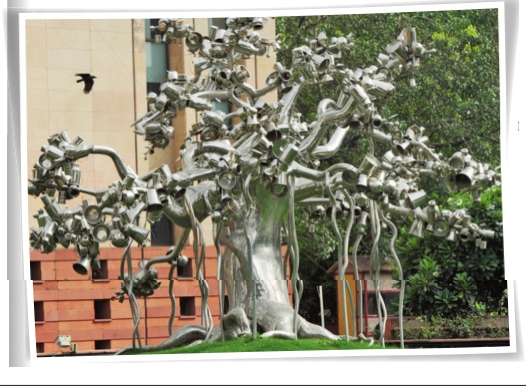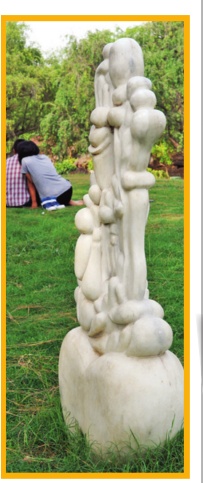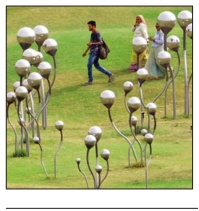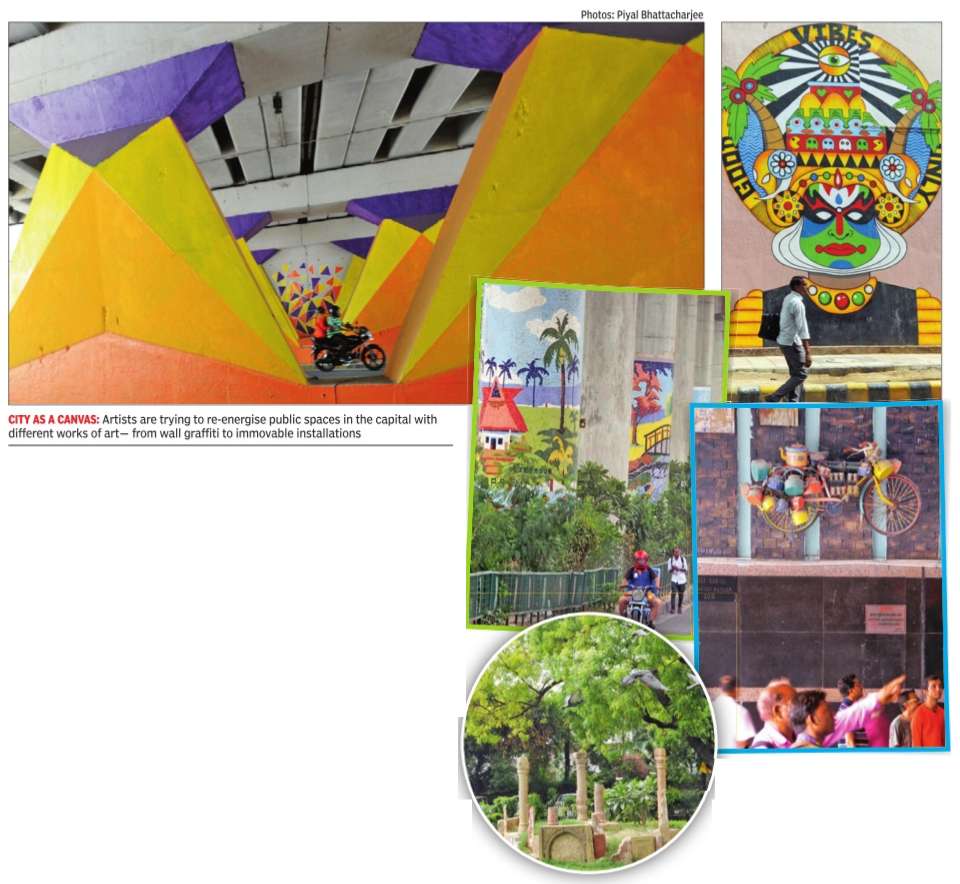Delhi: Public art
This is a collection of articles archived for the excellence of their content. |
In brief
The Times of India, May 29 2016




Vandals fail to give artists heart attack
Risha Chitlangia
Slowly but surely, capital is getting public artworks akin to other cities in the world. While public sensitivity to these has been a problem, with acts of vandalism, artists believe it's part of the process The Mirror is back at Palika Bazar in Connaught Place. To the dismay of many, the art piece--a larger-than-life spec tacles with mirrors in place of the lenses--had been vandalised and was only recently re-installed by the New Delhi Municipal Council (NDMC). And yet, city artists insist that the incident does not hold a mirror to how Delhi treats public art. “We shouldn't bother about these minor incidents. It is part of the process of sensitising people about public art,“ said Sudhakar Sharma, secretary, Lalit Kala Akademi (LKA). The Mirror is one of the nine art works commissioned by LKA and NDMC for installation in public spaces.The growing interest of government agencies in public art, Sharma said, is encouraging for the artist community .
Naresh Kumar, chairman of NDMC, himself observed: “Art adds value to the area where it is installed. This will not only create awareness among public but also encourage artists.“ The idea of public art, therefore, is to create a dialogue with people, generate curiosity and give a sense of belonging apart from enhancing the aesthetics of the area.
“Cities around the world are using public art to re-energise public spaces,“ said Neeraj Gupta, a city artist. “Such art also help people feel connected to the city.“
Lodhi Colony has been developed as the `art district' of Delhi with murals on almost all buildings. Similarly, Shankar Market in Connaught Place pleasures the senses with its wall art painted by street artists. Recently, an art installation created by Anjolie Ela Menon and architectural conserver Aman Nath was placed at the entrance of the Nizamuddin East residential colony , which is home to artists, politicians and some eminent public personalities.
To ensure quality art work in sync with Delhi's cultural fabric, Delhi Urban Arts Commission has decided to prepare a master plan for public art in the city. For the first time too, the government has included a chapter on public art in the recently notified Unified Building Byelaws for Delhi. PSN Rao, chair man of the body , said, “The master plan will focus on the type of art that should be put on display , identify the location where it can be installed and other general guidelines.“
While artists don't approve of restricting the type of art that can be put on display , they agree that location needs to be kept in mind. “The site of the art work often contextualizes the theme of the work,“ said Radha Mahendru, pro ject manager and curator at Khoj International Artists' Association.
Artists are also cautious of tak ing creative liberty where public art is concerned. They prefer taking baby steps as they take art to the masses.
“We are gradually introducing peo ple to art,“ said Hanif Kureshi, ar tistic director and co-founder of St+Art Foundation, which painted a portrait of Mahatma Gandhi on the façade of the Delhi Police headquar ters building.
The foundation is also credited with painting the country's longest mural on Tihar Jail's boundary wall and develop ing India's first `art district' at Lodhi Colony . The Tihar mural has verses of a poem written by an inmate that talks about the jailed people's hope that they will meet their loved ones in the future.
“The idea was to tell the outside world about the voice behind the four walls of the prison. We have to be careful when it comes to public art because it has to be site specific,“ said Kureshi.
Naresh Kapuria, art and culture director at The Lalit hotel, agrees. Two of his works are on display at New Delhi and Nizamuddin railway stations, and both depict journeys. A bicycle with tea kettles tied to it at New Delhi and train coaches at Nizamuddin “tell of a journey and what people usually do at railway stations while waiting for the train,“ explained Kapuria. The government agencies, however, have to quickly learn the art of proper display and maintenance of public art.“Some art pieces are not even cleaned regularly ,“ rued Kapuria. Perhaps for the time being they can follow Delhi Metro's example. “The several artworks installed at metro stations are within confined spaces and, therefore, easier to protect and maintain,“ pointed out Anuj Dayal, executive director, DMRC.
To ensure art works are not vandalised, artists suggested displaying them prominently in well-developed surrounding. “If the area around the art work is well-maintained, then the chances of its getting vandalised are lesser,“ reasoned Sharma.
South Delhi
South Delhi’s recycled art

From: July 30, 2018: The Times of India
See graphic :
South Delhi’s recycled art, 2018